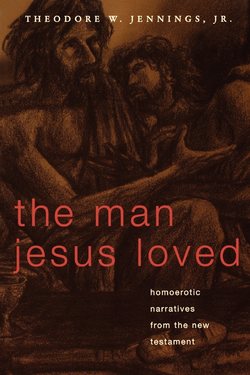Читать книгу Man Jesus Loved - Theodore W. Jr. Jennings - Страница 8
На сайте Литреса книга снята с продажи.
Chapter 1 Homosexuality and Biblical Interpretation
ОглавлениеIn the course of the last quarter century, the churches have been engaged in a protracted debate concerning homosexuality. At the heart of this debate has been a set of questions concerning the interpretation of the Bible. Issues of interpretation are hotly contested because some biblical passages appear to condemn at least some same-sex relationships or erotic practices.
An initial phase of the debate was couched in the context of the “sexual revolution” at the end of the 1960s. To a certain extent, the question of “homosexuality” was the leading wedge of an attempt to enable the church to confront in a new context the issues of sexual ethics.
The debate as originally posed had to do with the presupposition that certain persons were congenitally or at least irreversibly oriented toward finding sexual satisfaction among persons of their own gender. This “discovery,” based on the Kinsey report, warranted for some a revision of the proscription of same-sex erotic practices.
An early attempt to argue this case came in the context of the revision of civil statutes criminalizing same-sex erotic practices in England, a revision in which the official Church of England was engaged (through the Wolfenden Commission). Derrick Sherwin Bailey’s landmark study titled Homosexuality in the Western Christian Tradition was primarily concerned with the emergence of the legal criminalization of same-sex practices, but the work paid significant attention to the biblical texts that were supposed to be the foundation of such laws.1
Bailey’s work demonstrated that a great many biblical passages that nineteenth-century legalists had assumed entailed a proscription of homosexuality were in fact not pertinent. That is, Bailey succeeded in greatly limiting the number of texts that were deemed relevant to the discussion.
We were then left with two verses from Leviticus and three from the New Testament that seemed to require additional work, for these texts appear to proscribe same-sex genital practice among males (and, in one case, among females). What, if anything, should be made of these texts?
One hermeneutical strategy has been to disqualify these texts on the grounds that in no way do they deal with homosexual orientation, which is indeed true; neither the term nor the category was known much more than a century ago. Persons were not classified according to sexual orientation prior to the late nineteenth century. Before that time, only behavior was noted: who has sex with whom. The much vexed question about whether some persons actually had exclusive orientation to, or preference for, same-sex erotic satisfaction was not the issue. The hermeneutical strategy employed by some people today is to say that some persons are exclusively homosexual in orientation. For these persons, same-sex practice cannot be understood as unnatural and thus should be accepted, whatever the Bible says about those others of us for whom it is presumably unnatural.
This hermeneutical strategy of disqualifying of the pertinence of biblical texts for legislating a phenomenon not yet understood in the first century has certain limitations. In the first place, this latter approach accepts without question the modern category of homosexuality without dealing at all with the no-less-established category of bisexuality. But we are in a period when the very idea of homosexuality is itself questioned within the gay academy of theoreticians. The debate between constructivists and essentialists has rendered moot the whole category of homosexuality.
The attempt to finesse the question of practice by way of appeal to a category of persons who are innately homosexual must be regarded as resting upon shaky conceptual/theoretical foundations and, in any case, as having too limited a scope to deal with the issues of sexual practice that are at stake.
A further difficulty is involved in the kind of discussion that has predominated over the last quarter century. The focus has been on the question of accepting persons who either engage in or are attracted to the practice of same-sex erotic practices. “Homosexuals” have been petitioners who seek admittance to the ecclesial or social sphere. The question then has to do with toleration of difference and with widening the sphere of this tolerance to include “homosexuals.” The move to toleration has proceeded in such a way as to leave in place the presumption that the sexual values, and especially the marriage and family values, of “straight culture” are basically correct. The argument then is that people who are in some way congenitally incapable of realizing these values should receive a kind of exemption.
This sort of discussion is inherently demeaning to the people it seeks to benefit, pleading for understanding and tolerance while leaving untouched the prevailing values and arrangements. Persons who identify themselves as gay, lesbian, bisexual, or “queer” increasingly find it no longer worthwhile to engage in this inherently degrading discussion.
